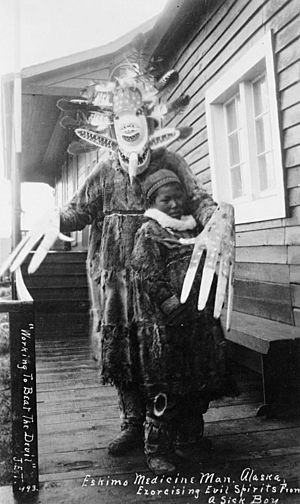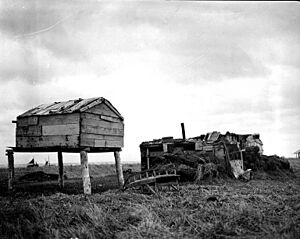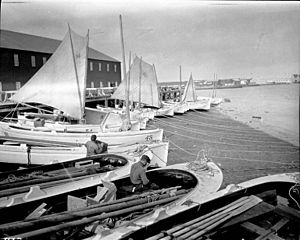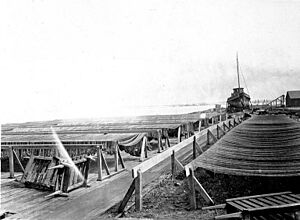Nushagak, Alaska facts for kids
Nushagak was once an important trading place and village in Alaska. It was located near where the Wood River and Nushagak River meet, close to today's city of Dillingham. This area is at the northern end of Nushagak Bay in Bristol Bay.
Contents
A Look Back: Nushagak's History
The land around Nushagak was originally home to Yup'ik people and Athabaskan groups. These Alaska Native communities had lived there for a very long time.
Early European Influence
In 1818, people from Russia built a trading post there called Alexandrovski Redoubt. This was a place where goods were exchanged. Later, in 1837, a Russian Orthodox church and mission were set up. By this time, the community was known as Nushagak. It became a busy spot where different Native groups from places like the Kuskokwim River, the Alaska Peninsula, and Cook Inlet came to trade or live.
The American Era and Fishing
After the Alaska Purchase in 1867, when the United States bought Alaska from Russia, changes began. In 1881, the U.S. Signal Corps built a weather station in Nushagak. This helped them track the weather.
The first salmon cannery in the Bristol Bay area was built in 1883. Canneries are factories where fish are processed and put into cans for shipping. This first cannery was located just east of Nushagak Point. Soon, more canneries were built, including two right at Nushagak Point.
Many companies owned and operated these canneries over the years. They were very important for the local economy. However, the area faced challenges. The mud flats around Nushagak Point made it hard for large boats to reach the canneries, except during very high tides. Even today, you can still find old equipment from the cannery days, like donkey engines, which were used to move heavy things.
Impact of the 1918 Flu Pandemic
In 1919, the worldwide influenza pandemic of 1918 severely affected the Nushagak region. This illness caused many people to get sick, and sadly, it led to a big drop in the population of Nushagak. After the epidemic, a hospital and an orphanage were built in Kanakanak, which was across the river from Nushagak.
Nushagak's Changing Population
| Historical population | |||
|---|---|---|---|
| Census | Pop. | %± | |
| 1880 | 178 | — | |
| 1890 | 268 | 50.6% | |
| 1900 | 324 | 20.9% | |
| 1910 | 74 | −77.2% | |
| 1920 | 16 | −78.4% | |
| 1930 | 43 | 168.8% | |
| 1940 | 41 | −4.7% | |
| U.S. Decennial Census | |||
Nushagak's population changed a lot over the years. In 1880, when the U.S. Census first counted people there, Nushagak had 178 residents. Most of them were Inuit or people of mixed Russian and Native heritage, called Creole.
Population Shifts
By 1890, the population grew to 268. This count included people from the weather station and the cannery. At that time, many residents were Asian workers who came to work in the canneries. There were also many Native people and White residents.
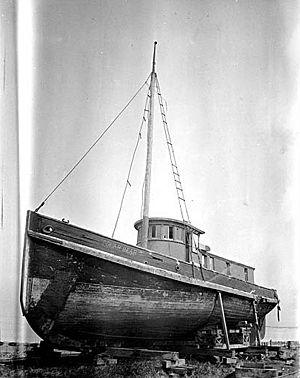
In 1900, the population reached 324. However, after the canneries started to close down, the number of people living in Nushagak dropped very quickly. By 1920, only 16 people were recorded living there. The population remained small after that, and Nushagak is no longer a populated place today.



